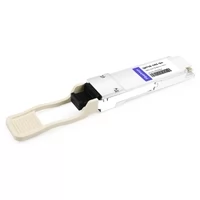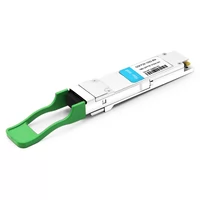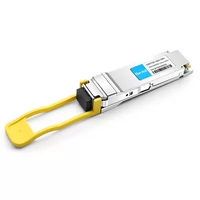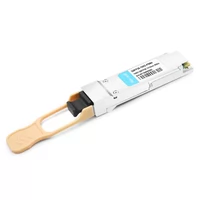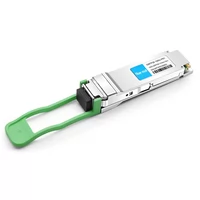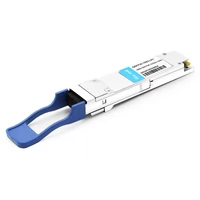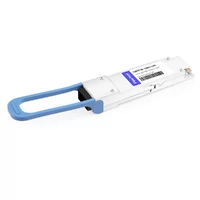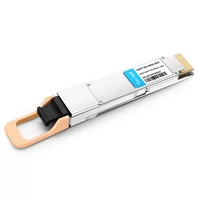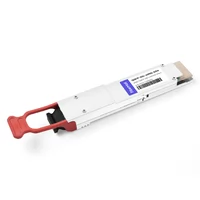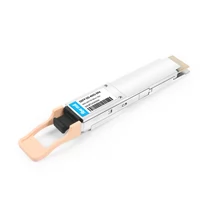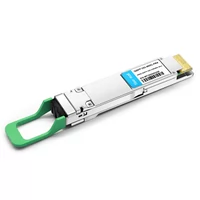In order to find out where the future lies in this competitive quest for speed of data transmission, it is observed that QSFP (Quad Small Form-factor Pluggable) connectors and interconnect systems have come as necessary elements to reach the network efficiently and flexibly. Research suggest exploring in depth the nuances of QSFP technology with regard to its design and use, use in various applications in networking. As data demand heats up especially in content-hosting networking systems, the engineers and network professionals have to appreciate the finer details of the QSFP connectors such as their kind, features, and their howtos. This article adds detail to both the technical parameters as well as the practical aspects of the issues at hand and helps the reader to sit with system designs and make critical choices on interconnect solutions.
Table of Contents
ToggleWhat is a QSFP Cage, and How Does it Work?

Understanding the QSFP Cage Assembly
The frame of the QSFP module is a QSFP cage assembly; this part contains all and any necessary mechanical and electrical components for connection of the QSFP within the networking devices. The cage is of a sturdy metal alloy in order to be able to hold electrical as well as optical parts of the QSFP module securely in position. It assists in thermal management and signal fidelity and reduction of the destructive and unwanted disturbances, thus supporting stable high a speed rate of data flow. The assembly incorporates some apparatus like grounding and retention mechanisms that prevent movements of the module as well as shield against EMI. These elements help to ensure the general system performance and stability of the QSFP cage in relation to high density networking within which this application is embedded.
Key Features of QSFP Cage Connectors
High-speed data transmission has been the aim of the QSFP cage connectors, the construction of which has some of the features that help in better performance and better usability.
- High Data Rate Support: The linkage provided by the QSFP connectors can support data rate of over 400 Gbps which is ideal for high-performance computing and/or Data Center applications with particular focus on 28G applications.
- Versatile Configurations: The modular form of the QSFP connectors supports of QSFP+ connectors, QSFP28 power connector of the family of connectors whose purpose is to facilitate modern communication and QSFP56, thus allowing for alternative configurations within the network.
- Optimized Size and Density: The design of the FPGA marvel connectors QSFP cages enables high port density in networking devices to be maintained which in turn optimizes space usage and efficient cooling.
- Robust Mechanical Design: The connectors are constructed by using hard materials and features like mechanisms that lock the module assistance in increasing support and therefore preventing unnecessary cable disconnections.
- EMI Shielding: It is normal common practice for QSFP connectors to come with some integrated grounding and shielding features in order to prevent any electromagnetic interference and as a consequence, improving the quality of the signals.
- Ease of Installation and Maintenance: The configuration of the design of the QSFP cages makes it possible to carry out easy fitting as well as servicing which ensures that even with changing system requirements, interconnects are still effectively administered by the network teams.
With these advantages, QSFP cage connectors become an indispensable element of the modern networks since they allow transmitting large amount of data effectively without compromising the architecture and dependability of the system.
Performance Metrics: QSFP28 and QSFP DD
QSFP28: The aforementioned connector (QSFP28) is intended for channels with maximum speed of at least 100 Gbps with targeting transmission and data communication applications including data centers and high performance networking. Its performance is further characterized by low power limits of approximately 3.5 watts per port, an important aspect of energy-efficient design. Additionally, the operational bandwidth for QSFP28 is in the range of 850 nm to 1310 nm, making it suitable for short-range to medium-range distance applications.
QSFP DD: Unfortunately, for many users this solution does not stop at a performance level of a quad small form-factor pluggable double density (QSFP DD) connector which supports the capacity of 400 Gbps per four mating channels. It provides better power options and heat distribution with rack density because of its slim construction. The QSFP DD works mostly in the range from 850 nm to 1310 nm as with the rather narrow band dual-band world standard, but unlike it, it also supports PAM4 modulation that increases the bandwidth order of magnitude but preserves the integrity of the signal. Further, its power consumption is about 4.5 watts per port, which is also extremely important with the seat design of the modern data center that is sensitive to power.
In summary, it is apparent that the two connectors come in handy with the changing trends in the networking industry where both the QSFP28 and QSFP DD connectors perform different roles aimed at solving specific high-speed data needs.
How to Choose the Right QSFP Cage for Your Application?

Comparing 1×1 and 2×1 QSFP Cages
Selecting an appropriate combination of an 1×1 and 2×1 QSFP cages entails various engineering factors and considerations based on the intended use for a particular networking application.
The 1×1 QSFP cage configuration is made to enable multiple design configurations for enhanced connectivity. Most configurations typically are designed to accommodate a single QSFP module for instance only where the need for that connection is once or space is a constraint. This design also can improve both installation and maintenance, since it is such simple. However, due to the demand for concentrating the resources on one site, it might be limited in scalability, which is very important in such cases as increasing amounts of data needed by users.
On the other hand, the 2×1 QSFP cage easily accommodates two QSFP modules in a single slot, thus permitting more flexibility and bandwidth. This dual configuration is more appropriate in data centers and enterprise network where data throughput and redundancy is highly required. The 2×1 cage makes it easier to take up rack space in view of the current move towards easily higher data rates as well as more efficient space use within the rack more than offered by the increased density.
In the end, both the 1×1 QSFP cage and the 2×1 QSFP cage can be said to be known for their benefits however one is better suited than the other. Networks needs should dictate the selection of either an 1×1 or a 2×1 QSFP cages in regards to bandwidth requirement and physical space limitation among other considerations.
Selecting the Appropriate Heat Sink for Your QSFP Cage
When selecting a heat sink for your QSFP cage, some other important considerations must be made to ensure that the heat generated is handled efficiently. To start with, determine what the thermal performance specification of the QSFP module in use-a cause of concern because standards heat dissipation may not be enough, especially when confronted with high-density belly-to-belly configurations. A heat sink capable of shedding the collected heat needs to be used to allow operation with the lower expected temperatures.
Moving on, the dimensions of the heat sink should also correspond to those of the cage. In its absence, custom-fit options may offer better cooling performance in tight spaces, which is critical in zqsfp density comprised of multiple components. Also look at the type of material used in making the heat sink where aluminum and copper are popular with copper being better but expensive and likely to limit the design options.
Finally, the internal gas flow patterns inside the enclosure should also be examined. The latter often features heat sinks that passively utilize the ambient air to cool the component internally, while some configurations accept additional components such as fans to facilitate cooling. Hence, cold airflow distribution within a QSFP network needs to be well managed since it is very important to the complete thermal performance of the network, assisting in effective functioning and longevity of the modules.
Evaluating Connectivity Options for Different Data Rates
When considering interconnectivity options with various data rates, it is of utmost importance to appreciate the different particulars that are inherent in the network environment, for instance, the capability to support backward compatibility with some older technologies. High-speed data transmission technology, which includes 100 G and 400 G Ethernet, requires certain cables and transceivers that are suitable for such speeds and even allow for backward transmission with the use of old standard cables.
- Cabling: Particularly, the categories of cabling such as category 6a (Cat6a) together with the fiber optic solutions such as OM3 and OM4 multimode fibers are being adopted more widely as they have lesser attenuation and better bandwidth so as to cater for higher data rates.
- Transceiver Modules: I find it imperative to specify the relevant transceivers to be used such as SFP, QSFPs, or QSFP28 depending on the data rate and the application since these modules are quite different in data transmission range and capacities as well as compatibility.
- Network Topology: Apart from these, the selection of the network topology, whether it is point-to-point or another complex topology like a mesh network, has a substantial impact on the possible data rate and requires careful selection of switching and routing devices that can manage the desired data rate effectively.
As a final point, it is important to note that an optimal performance of the system in terms of data rates is only achievable if there is thorough comprehension of the relationship among cabling, transceiver specifications, and network architecture to satisfy the particular requirements of the system.
What Are the Benefits of QSFP Cages in High-Speed Data Centers?

Enhancing Signal Integrity and Minimizing EMI
Due to their contribution in improving the quality of the signals and reducing the risk of electromechanical interference, the QSFP cages are important parts of high-speed data centers. Being a mechanical component, the QSFP cage provides an accurate positional relationship between the plugs and sockets of the system rather, and this is very important to increasing the quality of signal transfer over a zqsfp and high speed data as well. Many times the designs of these cages include internal features such as copper shielding and grounding features that help diminish the impact of external interference and crosstalk for multiple channels. In addition, the materials which are used for the manufacture of the QSFP cages help to minimize the insertion loss and improve the return loss which enhances the transmission. Another benefit of the introduction of QSFP cages in the data center design is the increased level of meeting the required levels of standards in signal quality while increasing efficiency in the data operations.
Optimizing Airflow and Thermal Management
Airflow and thermal management procedures are critical activities in data centers aimed at maximizing equipment efficiency and durability. Part of specialized measures in cooling techniques is the use of hot aisle/cold aisle containment that helps to effectively manage the room air by allowing cooling to be focused at the intake of the server and hot air to be vented to the hot aisles. If, for example, a raised floor is employed, there may be increased airflow along with increased placement of cooling apparatus in particular locations. Combined with advanced thermal imaging, predictive cooling systems can assist constructed-data-centres managers increase airflow to hotter areas and reduce it on cooler areas. Equally, the conventional help to protect server rooms from overheating by employing air-conditioning routines without wasting electricity by replacing standard systems with more efficient ones, like liquid cooling, or in-row systems can be well implemented. The systematic control of air has the great advantage of preventing overheating, boosting efficiency, and playing an increasing energy efficiency and sustainability role in the data center operations respectively.
Maximizing Port Density and Cable Management
It is important to balance port density and cable plan in a manner that allows proper efficiency in the operation of the data center. The layout of the network devices should be directed at high density configurations, and such connections include the multi port modular switches and transceivers. This will enhance data throughput density within small spaces thus enabling more additional connections without high space demands.
The use of structured cabling systems can also improve airflow and mitigate the risk of clutter by allowing proper cable routing pathways thereby achieving reduced heating of equipment. For neatness and efficiency, other cable management accessories such as trays, ties, and labels are important in the organization of the system which aids in identification to quick fixing of faults. Maximizing the physical port density and ordering the cables will not only improve the effective utilization of that space but will also promote better management of the network’s plumbing, helping to increase the efficiency of the data center.
How Do QSFP Cages Compare to Other Interconnect Systems?

QSFP vs. OSFP: Key Differences
The most significant difference between the two interconnect technologies, QSFP (Quad Small Form-factor Pluggable) & OSFP (Octal Small Form Factor Pluggable), can be determined by their design and purpose. To begin, standards of usage in QSFP modules are four channels for data transmission and they can go up to 28 Gbps speed making in total 100 Gbps. Whereas in the case of OSFP modules, there will be eight channels that are designed to support with each channel capable of transmitting data of up to 28 Gbps broadband and hence total bandwidth available is 400 Gbps.
Also, the OSFP’s large physical form factor supports the continuation other cooling characteristics and therefore is more suitable to be used for high-grade applications requiring high data transmission. On the other hand, space saving attributes of QSFP’s small form factor practical construction are favorable to use in situations where maximum saving of space is required. In particular, these cleavages depict the readiness of the different types of factors of data center construction development which continues to concentrate more and more bandwidth for the OSFP.
Advantages of Using QSFP Cages Over Traditional SFP
The application of the QSFP cages instead of the By plugging in swappable small form pluggable SFP has some advantages, more so in modern aspects of data center requirements. To begin with, the use of the QSFP module provides a great increasing in data rate indicators due to the transmission of a number of channels within one transceiver, thus enhancing the overall bandwidth – 100G for QSFP and 400G for QSFP-DD against traditional maximum 1 G per channel l SFP.
Secondly, decrease of the number of ports for connection consolidation increases the port density as well as reduces the cabling and allows for better use of space and more effective airflow in the racks. Further more, QSFP cages are more accommodating in that a user has a choice between transmitting either multi mode or single mode to cover a wider application scope than before.. In general, these benefits naturally make the QSFP systems ideal solutions forfilling overall increasing high-speed networking needs.
What Are the Latest Innovations in QSFP Cage Technology?

112G Connectors and Cages for Next-Generation Data Rates
The introduction of new cage-style 112G connectors is an important step in progress toward reliable transmission of data at high rates. It is with these connectors that data,40, -112 Gbps per lane cabling bandwidth are able to be achieved in unprecedented levels thus catering for the continuously increasing data center bandwidth of the future. Using high-frequency connectors with strong electrical architecture with low sheaths prevents loss of signal integrity and improves efficiency of the whole system. The introduction of new materials and changes in the cage designs by integrating engineering controls has also improved the thermal performance and mechanical performance of the cage for efficient performance within the confined spaces of data center. 112G connectors and cages have therefore played a central role in fast-tracking adoption of new waves of data communications technology which will continue to exploit high speed networking.
Advancements in PCI and SMT QSFP Cages
In the direction of PCI (Peripheral Component Interconnect) & SMT (Surface Mount Technology) QSFP cages, recent strides have improved their performance as well as expanded their application scope. The recently defined PCIe Gen 4 and Gen 5 specification provide enhanced data rates which require even more requesting designs for the cages such as better thermal management, grounding etc. The advancements made in the manufacturing processes of SMT have also made it possible to make certain components more and more reliable and precise, thus lessening the chances of solder joint failures at high density leakage installations. Also, modern construct has now made it possible to use any number of types of QSFP transceivers allowing upgrade and maintenance. These improvements ensure that the PCI and SMT QSFP cage structures satisfy the strict requirements of perspectives data centers and increase efficiency and reliability of the systems as a whole.
New Developments in Copper and Optical Cable Assemblies
It is hard to ignore the abundance of possibilities provided by the progress of copper and optical cable assemblies. More sophisticated shielding methods are now being incorporated into the copper assemblies in order to reduce EMI which is to be expected in a densely packed environment. Likewise, the functionality of the cable assemblies with respect to IoT capabilities also enhances the ability to monitor performance, which makes it possible to perform maintenance instead of waiting for downtime.
In the case of optical cable assemblies, minimization of losses and increase of bandwidth is fortunately achieved through enhancement of fiber materials and improvement of connector designs. More so, new techniques of mass-fusion splicing are improving mass-fusion splicing efficiency and making shorter installation time to cut down operational costs. With the current move towards 5G networks and cloud adoption across the world growing at a high speed, these innovations are critical to enable such fast, reliable and cost-effective communications across multiple applications.
Reference Sources
Frequently Asked Questions (FAQs)

Q: What is a QSFP cage assembly, and what is its function?
A: A QSFP cage assembly, or cage assy, is a structure that performs mechanical as well as EMI shielding functions for QSFP connectors. This is of great importance for the achievement of high performance and reliability of data communication connections within high-density application environments where 28G technology is.
Q: Who can use QSFP connectors? Another quick answer.
A: QSFP connectors (Quad Small Form-Factor Pluggable) are designed for use in high-speed Ethernet and InfiniBand networks for transceivers’ and cables’ connectivity. The channel data rates can reach up to 56 Gbps, which perfectly suits data center interconnects and high performance computing, particularly in telecom configurations.
Q: How can the use of QSFP connectors and cable assemblies improve the performance of data center applications?
A: QSFP connectors and cable assemblies guarantee high bandwidth and low latency for data center applications. Handhul electronic data is such that data transmission capacity can be as high as 400 Gbps, making it an efficient monochrome upgrade path for addressing the future generation data centers.
Q: What is the difference between NRZ and 56G PAM-4 transmissions in QSFP interconnects?
A: NRZ (Non-Return-to-Zero) and 56G PAM-4 (Pulse Amplitude Modulation) are two different signal modulation schemes. In NRZ, Two levels of signal are used in data bits while in 56G PAM-4 four levels of signal are employed giving a higher data rate. QSFP interconnects carotid to the radiotype of 56G PAM-4 are able to accommodate much broader bandwidth than those of NRZ.
Q: What is the importance of thermal management as far as Qsfp modules are concerned?
A: Thermal management is of critical importance in QSFP modules for efficient operation and reliability. Modules with enhanced thermal characteristics have excellent power dissipation capacity which makes them reliable and stable even in very crowded systems.
Q: What are the advantages of using copper cable assemblies with QSFP connectors?
A: Copper cable assemblies with QSFP connectors provide good latency and enable efficient utilization of power. They are ideal for limited distances and if viewed on a cost basis are cheaper than the optical cables. Furthermore, they ensure enhanced performance when it comes to the transfer of data over distances at high speeds.
Q: What is the importance of 1×6 and 1×5 configuration in QSFP interconnects?
A: The 1×6 and 1×5 configurations relate to how many QSFP cages are arranged within a single row in the connector systems. These configurations provide high density and enabling condition enabling use of low profile and PCB performance. This comes in handy to optimize the footprint as well as the interconnectivity options in data centers.
Q: Why does MSA matter in regards to QSFP connectors?
A: The multi-source agreement (MSA) guarantees that module manufacturers such as Molex, Amphenol, TE Connectivity, and Samtec, most, if not all, QSFP modules and connectors will work with their Plugins. This standardization makes joining interconnects possible and gives design engineers flexibility in the design of the interconnect.
Q: What significance do QSFP transceivers have in networking?
A: The QSFP transceivers are pluggable components that enable the transmission of electrical signals into optical signals and vice-versa. They facilitate the transmission of data over long distances at high speeds, which makes them essential in Ethernet as well as high-performance computing environments, whereby the incorporation of port QSFP enables high-speed connectivity. The transceiver also allows for very fast transmissions, reaching even over 400Gbps at times.
Q: How does an upgrade path in data center QSFP interconnects support QSFP interconnects?
A: QSFP interconnects facilitate a straightforward progres sion of upgrades in simultaneous coping with data rates that are implemented, as well as those that are yet to be implemented. They are easily fitted with previous developments and also help with the rising capacities for the forthcoming generations of data centers thereby promoting network infrastructure for the future.
Related Products:
-
 QSFP28-100G-SR4 100G QSFP28 SR4 850nm 100m MTP/MPO MMF DDM Transceiver Module
$40.00
QSFP28-100G-SR4 100G QSFP28 SR4 850nm 100m MTP/MPO MMF DDM Transceiver Module
$40.00
-
 QSFP28-100G-IR4 100G QSFP28 IR4 1310nm (CWDM4) 2km LC SMF DDM Transceiver Module
$110.00
QSFP28-100G-IR4 100G QSFP28 IR4 1310nm (CWDM4) 2km LC SMF DDM Transceiver Module
$110.00
-
 QSFP28-100G-DR1 100G QSFP28 Single Lambda DR 1310nm 500m LC SMF with FEC DDM Optical Transceiver
$180.00
QSFP28-100G-DR1 100G QSFP28 Single Lambda DR 1310nm 500m LC SMF with FEC DDM Optical Transceiver
$180.00
-
 QSFP28-100G-PSM4 100G QSFP28 PSM4 1310nm 500m MTP/MPO SMF DDM Transceiver Module
$180.00
QSFP28-100G-PSM4 100G QSFP28 PSM4 1310nm 500m MTP/MPO SMF DDM Transceiver Module
$180.00
-
 QSFP28-100G-FR1 100G QSFP28 Single Lambda FR 1310nm 2km LC SMF with FEC DDM Optical Transceiver
$215.00
QSFP28-100G-FR1 100G QSFP28 Single Lambda FR 1310nm 2km LC SMF with FEC DDM Optical Transceiver
$215.00
-
 QSFP28-100G-LR1 100G QSFP28 Single Lambda LR 1310nm 10km LC SMF with FEC DDM Optical Transceiver
$265.00
QSFP28-100G-LR1 100G QSFP28 Single Lambda LR 1310nm 10km LC SMF with FEC DDM Optical Transceiver
$265.00
-
 QSFP28-100G-LR4 100G QSFP28 LR4 1310nm (LAN WDM) 10km LC SMF DDM Transceiver Module
$285.00
QSFP28-100G-LR4 100G QSFP28 LR4 1310nm (LAN WDM) 10km LC SMF DDM Transceiver Module
$285.00
-
 QSFP-DD-400G-SR8 400G QSFP-DD SR8 PAM4 850nm 100m MTP/MPO OM3 FEC Optical Transceiver Module
$149.00
QSFP-DD-400G-SR8 400G QSFP-DD SR8 PAM4 850nm 100m MTP/MPO OM3 FEC Optical Transceiver Module
$149.00
-
 QSFP-DD-400G-DR4 400G QSFP-DD DR4 PAM4 1310nm 500m MTP/MPO SMF FEC Optical Transceiver Module
$400.00
QSFP-DD-400G-DR4 400G QSFP-DD DR4 PAM4 1310nm 500m MTP/MPO SMF FEC Optical Transceiver Module
$400.00
-
 QSFP-DD-400G-ER4 400G QSFP-DD ER4 PAM4 LWDM4 40km LC SMF without FEC Optical Transceiver Module
$3500.00
QSFP-DD-400G-ER4 400G QSFP-DD ER4 PAM4 LWDM4 40km LC SMF without FEC Optical Transceiver Module
$3500.00
-
 QSFP-DD-400G-SR4 QSFP-DD 400G SR4 PAM4 850nm 100m MTP/MPO-12 OM4 FEC Optical Transceiver Module
$450.00
QSFP-DD-400G-SR4 QSFP-DD 400G SR4 PAM4 850nm 100m MTP/MPO-12 OM4 FEC Optical Transceiver Module
$450.00
-
 QSFP-DD-400G-FR4 400G QSFP-DD FR4 PAM4 CWDM4 2km LC SMF FEC Optical Transceiver Module
$500.00
QSFP-DD-400G-FR4 400G QSFP-DD FR4 PAM4 CWDM4 2km LC SMF FEC Optical Transceiver Module
$500.00

